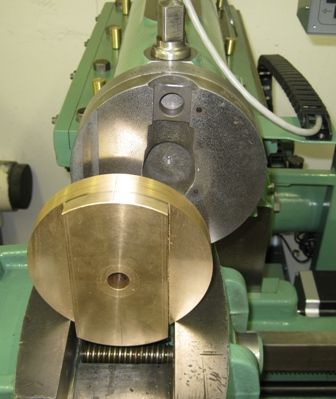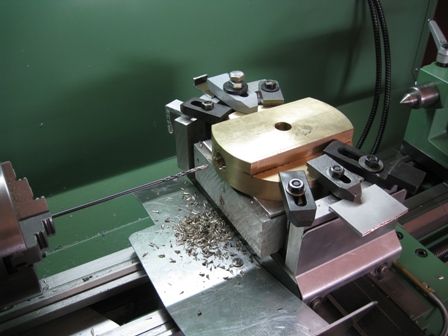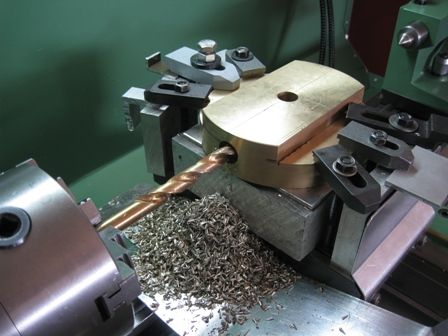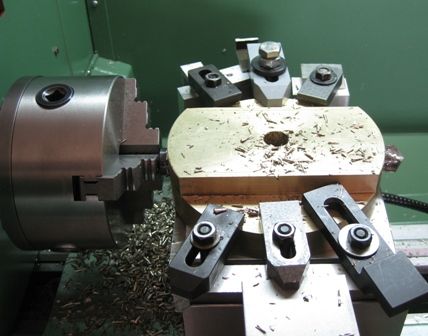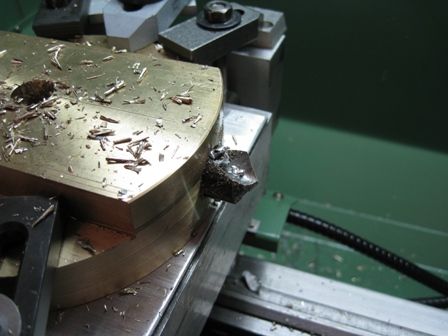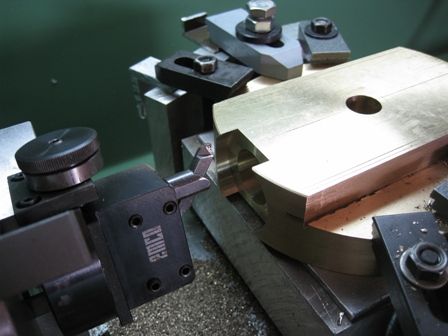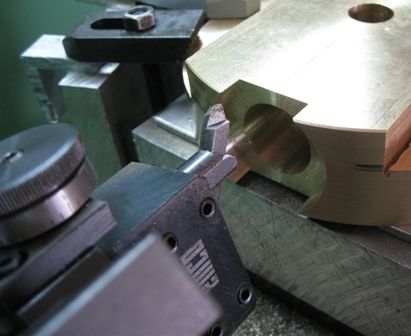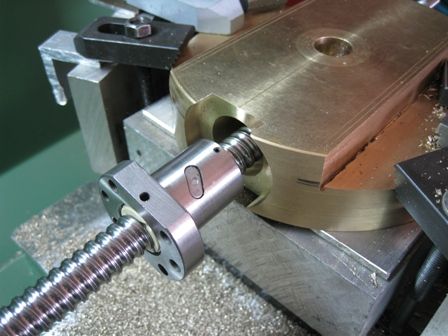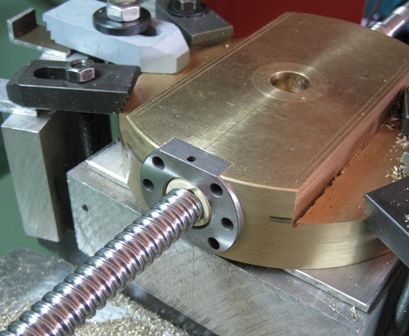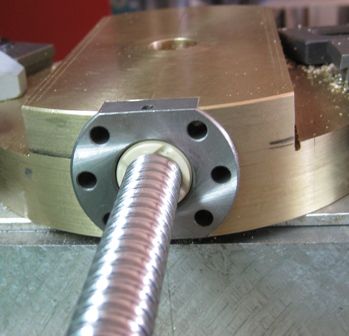The last bit of painful work left in the refurb of my shaper is the repair of the broken vertical slide dovetail.
I have cut off the broken dovetail section from the ram head, and machined the head flat. I obtained a 210mm diameter section of Phosphor bronze, 40mm thick, and will machine the new dovetails into this, and then bolt this to the Ram head. The Slide leadscrew was also badly bent in the last owners crash, so while about it, since I am adding Stepper NC control to the Z axis, I decided to fit a 16mm ball screw to the slide.
The bronze was machined on diameter to fit the Ram head, and made flat. The dovetail area marked out and the excess material cut out on the bandsaw. The section was then mounted on the lathe cross slide to drill out the leadscrew through-hole, and bore out the ball nut mounting cavity. The thru hole is 20mm, and a snug fitting, long 20mm bar will fit in this hole to align the section on the mill when ready to cut the dovetails.
The original vertical slide dovetails are 55degree, and the cutter I could get (65mm diameter!) is 60 degree, so I will first open up the slide to 60degree on each dovetail, and then measure up and cut the dovetails in the matching bronze part.
I must say, I have read all sorts of horror stories about machining PhBronze – grabs the drill immovably, siezes on Taps, etc – this was a breeze! taking care on the drill break-through was needed, but the 20mm drill , with a 6mm pilot hole, followed by 16mm, then the 20mm, went through no problem.
I have a question – maybe silly to ponder on, but..
The bronze section is to be bolted onto the cast iron Ram head with 4 x M12 CSK Cap screws. These take no load during the cut stroke, so no problem there. But, is there a sensible preference to put the threads in the bronze, or in the cast-iron head?, ie, Bolt from the front or the rear??
Pics of the doings..
This shows the bronze section and how it will fit ( bolt) onto the Ram head- related to the above question

6mm pilot

16mm next up..

20mm all through

20mm tip breaks through..

Boring the Ballnut cavity


Ball nut and screw

Ball nut snugly in place


Joe,,,,
Edited By Joseph Noci 1 on 13/08/2017 21:03:04
Joseph Noci 1.


